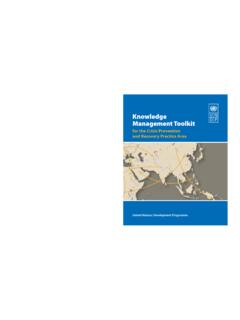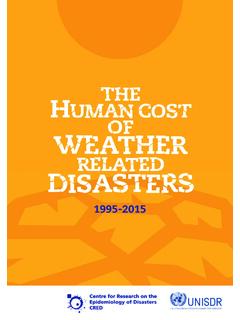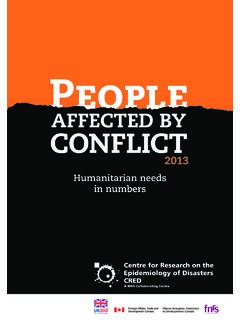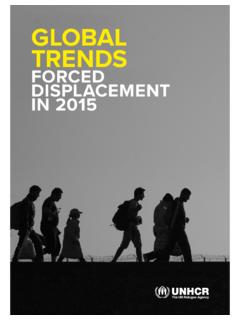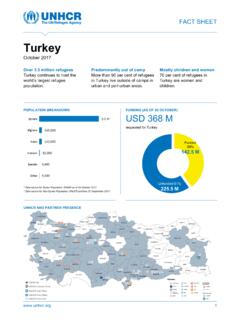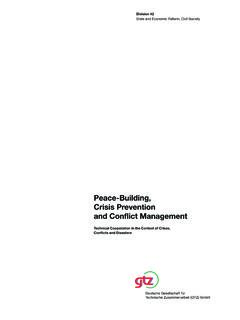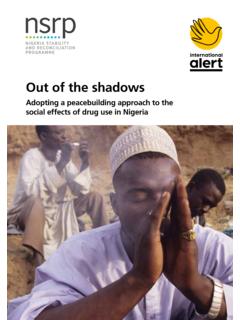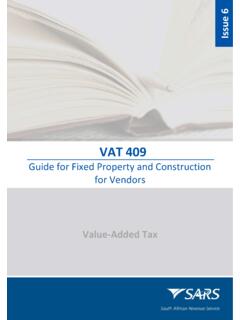Transcription of Agrarian reform and the difficult road to peace in the ...
1 ReportDecember 2015 Executive summaryBy Danilo T. CarranzaAgrarian reform and the difficult road to peace in the Philippine countrysideAgrarian reform and conflict in the rural areas of the Philippines are closely intertwined. The weak government implementation of the Comprehensive Agrarian reform Program, inherent loopholes in the law, strong landowner resistance, weak farmers organisations, and the continuing espousal by the New People s Army of its own Agrarian revolution combine to make the government s Agrarian reform programme only partially successful in breaking up land monopolies. This is why poverty is still pronounced in many rural areas.
2 The rise of an Agrarian reform movement has significantly contributed to the partial success of the government s Agrarian reform programme. But the government has not been able to tap the full potential of this movement to push for faster and more meaningful Agrarian Agrarian reform dynamics between pro- and anti- Agrarian reform actors create social tensions that often lead to violence, of which land-rights claimants are often the victims. This is exacerbated and in many ways encouraged by the government s failure to fulfil its obligation to protect the basic human rights of land-rights claimants. This report outlines the pace and direction of Agrarian reform in the Philippines and its role in fighting poverty and promoting peace in rural areas.
3 It emphasises the importance of reform -oriented peasant movements and more effective government implementation to the success of Agrarian reform . The report also asserts the need for the government and the armed left to respect human rights and international humanitarian law in promoting the full participation of land-rights claimants in shaping and crafting public policy around land causes of rural inequality, poverty and conflictThe Philippine agricultural sector is characterised by unequal and highly skewed landownership. When the Spanish colonialists introduced the encomienda and hacienda system, control over vast tracts of land fell into the hands of a very small landowning class, dispossessing a mass of peasants of the land that they and their ances-tors had been tilling for generations.
4 With this process of dispossession colonial rule resulted in the peasantry experiencing poverty, exploitation and oppression. Inequal-ities in landownership resulted in armed Agrarian unrest and saw the birth of rural social movements that demand-ed the breaking of the land monopoly. At various times in the country s history various land reform laws were passed purportedly to promote Agrarian justice by reforming a land property rights regime that favours only the the 1950s onward the land reform laws that were implemented, such as the Agricultural Tenancy reform Act and the Agricultural leasehold Act, among others, tended to be mere concessions to tenants and were insufficient to bring about fundamental changes in the structure of land ownership.
5 These policies did not transfer ownership to peasants and merely focused on regulating production relations between landowners and tenants. In 1972 Presidential Decree no. 27 under former president Ferdi-nand Marcos offered a limited land redistribution window by covering only rice and corn lands. It was implemented mainly in Central Luzon, a hotbed of peasant insurgency and the birthplace of the New People s Army (NPA) (Borras et al., 2009: 5; Reyes, 2002: 8ff.) After Marcos was ousted through the People Power revolution in 1986, organised farmers and their supporters 22 NOREF Report December 2015demanded the immediate passage of a law on Agrarian reform .
6 A broad alliance called the Congress for a People s Agrarian reform proposed what was called the People s Agrarian reform Code in an attempt to pressure the new government of President Corazon Aquino to implement Agrarian reform . On January 22nd 1987 the Kilusang Magbubukid ng Pilipinas (Peasant Movement of the Philippines), then the largest peasant movement in the country, organised a huge march of peasants to demand the immediate implementation of genuine Agrarian reform . The marchers clashed with the police, leading to the infamous Mendiola Massacre , which caused the death of 13 farmers and injuries to more than a hundred protesters (see Gavilan, 2015).
7 In response to the sustained pressure from various peasant groups Congress finally enacted the Comprehensive Agrarian reform Program (CARP) in 1988. CARP was supposed to be the watershed in the Philippine peasants struggle for land (Franco, 2008: 995) and de-mands for social justice from below. Twenty-seven years later, however, demands for Agrarian reform land reform ? More than half of the Philippine population lives in rural areas. Forty per cent of land is attributed to the agricul-tural sector, employing about one-third of all Filipinos. This sector, however, contributes only of GDP (World Bank, ). Yet for a long time vast tracts of the country s best agricultural lands had been in the hands of a very few landowners.
8 This contributed directly to widespread poverty in rural areas. A comprehensive land reform programme was deemed necessary to address rural poverty, with landless farmers and tenants among the most affected groups (ADB, 2009: 3). Agrarian reform is important to rural democratisation and the land-dependent rural poor s enjoyment of basic human rights. Philippine society is shaped by a land-based power structure and regional rural elites control of vast tracts of land serves as their ticket to elective office. They are able to perpetuate themselves in power through patron-client relationships. Tenants and ordinary people living on haciendas are normally beholden to hacienda owners through strict social regulation.
9 Most often, these hacien-da-bounded rural citizens are unable to exercise their basic rights to association and to vote. These regional elites undermine traditional and indigenous concepts of land-ownership and restrict poor peoples political ability to claim land rights (Franco, 2008: 994). The 1988 land reform law was therefore a crucial measure to break up these undemocratic structures by targeting the redistribution of land to landless farmers, farmworkers and tenants. Secure tenure rights to and control of land also mean access to the fundamental human rights to livelihood and food. Thus, Agrarian reform also emphasises land owner-ship as a human right as enshrined in international treaties and policies, such as the UN Declaration on Human Rights and the International Covenant on Economic, Social and Cultural Rights, to which the Philippines is a state party (see FIAN Philippines, 2006).
10 The Philippines itself en-shrined the right of farmers to own the land they till in the 1987 Philippine constitution, enunciating that the right to land is integral to the attainment of equity and social justice in Philippine society. Likewise, secure land tenure reduces the vulnerability of disaster survivors. Typhoon Haiyan (locally known as Yolanda) exposed the vulnerabilities of farmers without secure land tenure when some international humanitarian agencies refused to provide humanitarian aid to farmers and informal settlers who were unable to show secure land property rights. The right to humanitarian assistance therefore requires that the land-dependent rural poor have secure land property rights.
